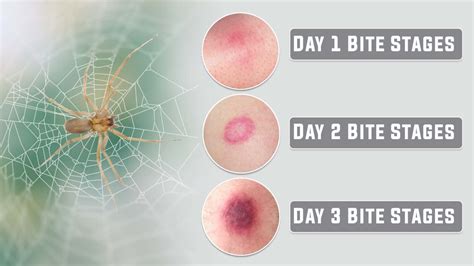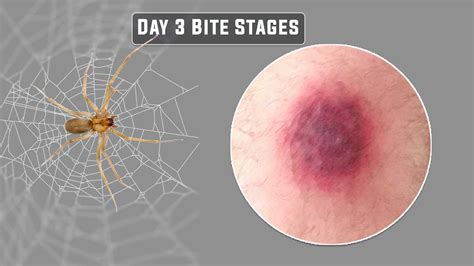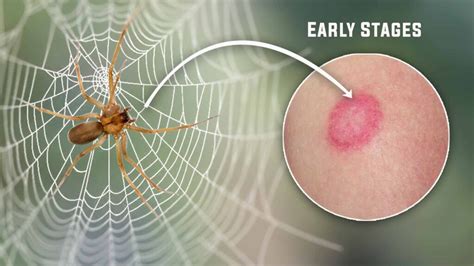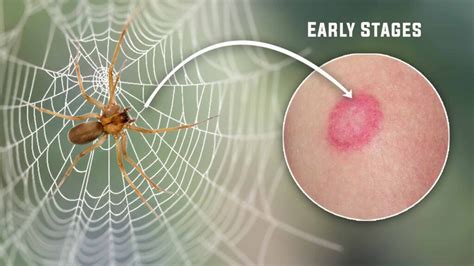Intro
Effective Brown Recluse Spider Bite Treatment involves prompt medical care, wound cleaning, and pain management, utilizing antihistamines, antibiotics, and topical creams to alleviate venom symptoms and prevent necrotic lesions.
The brown recluse spider is a venomous spider found primarily in the Midwestern and Southeastern United States. Its bite can cause significant pain, swelling, and blistering, and in severe cases, it can lead to more serious health complications. Understanding the treatment options for a brown recluse spider bite is crucial for effective management and prevention of long-term damage.
Brown recluse spider bites are relatively rare, but when they do occur, it's essential to seek medical attention promptly. The venom from the spider's bite can cause necrotic lesions, which can lead to serious infections and scarring if left untreated. In this article, we will delve into the world of brown recluse spider bites, exploring the symptoms, treatment options, and preventive measures to minimize the risk of complications.
The importance of recognizing the symptoms of a brown recluse spider bite cannot be overstated. Early detection and treatment can significantly reduce the risk of long-term damage and promote faster healing. Some common symptoms of a brown recluse spider bite include severe pain, swelling, and redness at the bite site, as well as blistering and necrotic lesions. In some cases, the bite may also cause systemic symptoms such as fever, chills, and nausea.
Brown Recluse Spider Bite Symptoms

Common Symptoms of Brown Recluse Spider Bites
Some common symptoms of brown recluse spider bites include: * Severe pain at the bite site * Swelling and redness * Blistering and necrotic lesions * Systemic symptoms such as fever, chills, and nausea * Formation of a black eschar at the bite siteTreatment Options for Brown Recluse Spider Bites

Wound Care for Brown Recluse Spider Bites
Wound care is a critical component of treatment for brown recluse spider bites. This includes: * Cleaning the wound with soap and water * Applying topical antibiotics to prevent infection * Covering the wound with a sterile dressing * Elevating the affected area to reduce swellingPain Management for Brown Recluse Spider Bites

Antibiotic Therapy for Brown Recluse Spider Bites
Antibiotic therapy may be necessary to prevent infection and promote wound healing. This can include: * Oral antibiotics such as amoxicillin or ciprofloxacin * Topical antibiotics such as bacitracin or neomycin * Intravenous antibiotics such as ceftriaxone or vancomycinPreventive Measures for Brown Recluse Spider Bites

Reducing the Risk of Brown Recluse Spider Bites
Reducing the risk of brown recluse spider bites requires a combination of preventive measures and awareness. This includes: * Being aware of the spider's habitat and behavior * Avoiding areas where spiders are common * Wearing protective clothing when working outdoors * Using insecticides or spider repellents to deter spidersComplications of Brown Recluse Spider Bites

Managing Complications of Brown Recluse Spider Bites
Managing complications of brown recluse spider bites requires prompt medical attention and aggressive treatment. This includes: * Surgical intervention to remove necrotic tissue * Antibiotic therapy to prevent infection * Pain management to reduce discomfort and promote healing * Wound care to promote healing and minimize scarringConclusion and Next Steps

What are the symptoms of a brown recluse spider bite?
+The symptoms of a brown recluse spider bite include severe pain, swelling, and redness at the bite site, as well as blistering and necrotic lesions. In some cases, the bite may also cause systemic symptoms such as fever, chills, and nausea.
How are brown recluse spider bites treated?
+Treatment for brown recluse spider bites typically involves a combination of wound care, pain management, and antibiotic therapy. In some cases, surgical intervention may be necessary to remove necrotic tissue and promote healing.
Can brown recluse spider bites be prevented?
+Yes, preventive measures can help minimize the risk of brown recluse spider bites. This includes sealing entry points around the home, removing clutter and debris, wearing protective clothing, and using insecticides or spider repellents to deter spiders.
What are the complications of brown recluse spider bites?
+Complications of brown recluse spider bites can be severe and long-lasting, including necrotic lesions, systemic symptoms, infections, and long-term damage to the skin and underlying tissue.
How can I reduce the risk of brown recluse spider bites?
+Reducing the risk of brown recluse spider bites requires a combination of preventive measures and awareness, including being aware of the spider's habitat and behavior, avoiding areas where spiders are common, wearing protective clothing, and using insecticides or spider repellents to deter spiders.
